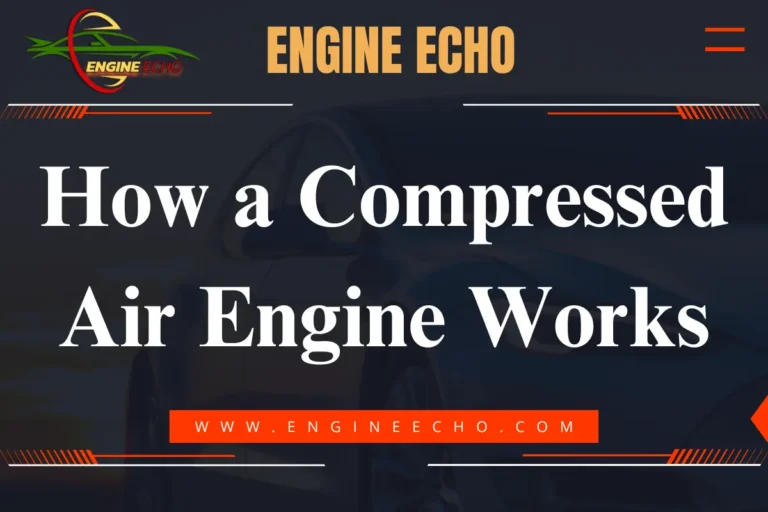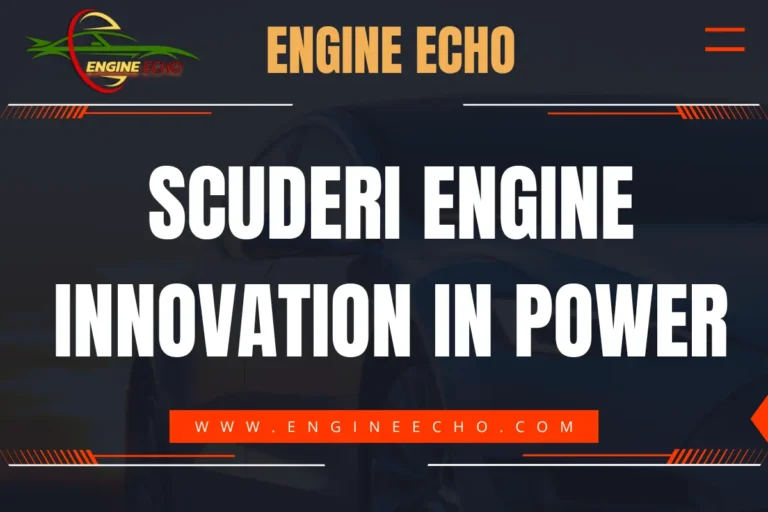Engine and Parts: Everything You Should Know

Key Takeaways
- Understanding the fundamental components of an engine is crucial for anyone interested in automotive technology.
- There are various types of engines, each with its unique set of parts and functions.
- Knowledge of engine systems, such as cooling, lubrication, and ignition, can aid in better engine maintenance and troubleshooting.
- The future of engines is shifting towards more eco-friendly technologies like electric and hybrid engines.
- Regular maintenance and understanding common engine issues can significantly extend engine life.
Introduction to Engines
Engines are the heart and soul of any vehicle, taking raw fuel and turning it into the power that gets our cars, trucks, and a multitude of other machines moving. If you’re like me, with a genuine curiosity for how things work, engines can seem like the ultimate puzzle—a mix of metal, fuel, and fire that somehow powers our lives. My fascination with engines started years ago, and through this article, I hope to share some of that wonder, demystifying these incredible machines so you can appreciate them as much as I do.
Definition and Importance
At its core, an engine is a machine designed to convert energy—most commonly from fuel—into mechanical force that drives a vehicle or powers machinery. This process is what makes movement possible and what turns the potential of raw energy into something tangible and usable.
Brief History of Engines
Engines have come a long way since the days of the steam engine, a cornerstone of the Industrial Revolution. When internal combustion engines (ICE) were introduced in the late 19th century, they revolutionized transportation and manufacturing, setting the stage for the modern world we live in today.
Types of Engines
There’s a wide variety of engines out there, each suited to different applications. Internal combustion engines, electric engines, and hybrid engines all have their unique sets of components and mechanisms. Each type has its own strengths, and knowing these can help you understand which engine suits your needs best.
Main Components of an Engine
Every engine is made up of several critical parts that work together to produce motion. Getting to know these components is key not only to understanding how engines work but also to diagnosing problems and performing maintenance. I remember the first time I delved into the inner workings of an engine—it was like discovering the blueprint of a machine that had always seemed so complex.
Cylinder Block
The cylinder block is where the magic starts. It’s the backbone of the engine, holding everything together—from the cylinders to the crankshaft.
- Structure and Function: The cylinder block is typically made from cast iron or aluminum and serves as the main structural framework for the engine. I’ve found that understanding its role helps in grasping how the engine’s various parts are interconnected.
- Types of Cylinder Blocks: Whether it’s an inline, V-type, or flat cylinder block, each configuration has its benefits. Personally, I’ve always been partial to the compact efficiency of inline blocks.
Cylinder Head
Sitting atop the cylinder block, the cylinder head seals the cylinders and contains components like valves and spark plugs, which are crucial for engine operation.
- Material Composition: Cylinder heads are usually made from cast iron or aluminum, materials that can withstand high pressures and temperatures. In my experience, recognizing the importance of these materials is vital in understanding why certain engines perform better under specific conditions.
- Key Functions: The cylinder head not only seals the combustion chamber but also facilitates the intake and exhaust of gases, making it a key player in the engine’s efficiency.
Crankshaft
The crankshaft is the unsung hero of the engine, taking that piston power and turning it into the spin that drives your wheels.
- Purpose and Design: Typically made from forged steel or cast iron, the crankshaft’s design includes counterweights to balance the engine. I’ve always admired the precision involved in its construction; it’s truly a work of engineering art.
- Materials Used: The materials chosen for crankshafts, often steel alloys, are critical for handling the stress and strain they undergo.
Camshaft
The camshaft controls the timing of the engine’s valves, which is essential for the intake of air and fuel and the expulsion of exhaust gases.
- Role in Engine Operation: The camshaft needs to be perfectly synchronized with the crankshaft to ensure the valves open and close at the right times. When I first learned this, it gave me a whole new appreciation for the complexity of engine timing.
- Different Types of Camshafts: Engines might have a Single Overhead Camshaft (SOHC) or a Double Overhead Camshaft (DOHC), each offering different performance benefits.
Internal Combustion Engine (ICE)
The internal combustion engine is a testament to human ingenuity and remains the most common engine type used in vehicles today. Despite the rise of electric engines, there’s something deeply satisfying about the roar of a well-tuned ICE.
How ICE Works
Internal combustion engines operate by igniting a fuel-air mixture within cylinders, producing controlled explosions that generate power. This process, whether in a four-stroke or two-stroke cycle, is what makes these engines so powerful and versatile.
- Four-Stroke Engine Cycle: This cycle, consisting of intake, compression, power, and exhaust strokes, is the backbone of modern internal combustion engines. It’s a method that I’ve found to be both efficient and reliable.
- Two-Stroke Engine Cycle: While less common in larger vehicles, two-stroke engines have a simplicity that makes them ideal for smaller machines. They’re a bit noisier but incredibly efficient in their own way.
Key Parts of ICE
Several key components are crucial for the operation of an internal combustion engine, and getting to know these can make all the difference in understanding how your vehicle works.
- Pistons: Pistons move up and down within the cylinders, converting the force of the explosion into mechanical energy. This movement is something I’ve always found mesmerizing—there’s a kind of rhythmic beauty to it.
- Valves: Valves control the intake of air and fuel and the expulsion of exhaust gases, playing a crucial role in the engine’s breathing.
- Connecting Rods: These rods connect the pistons to the crankshaft, transmitting the motion needed to power the vehicle.
Electric Engines
Electric engines are where the future is headed. I remember the first time I took an electric car for a spin—it was almost surreal how smooth and quiet it was, a total game-changer compared to the roar of a gas engine.
Overview of Electric Engines
Electric engines use electricity stored in batteries to power an electric motor, which then drives the vehicle. It’s a simple yet powerful system that’s rapidly gaining popularity.
Key Components of Electric Engines
Electric engines have fewer moving parts than internal combustion engines, which makes them simpler to maintain but no less impressive in terms of performance.
- Electric Motor: Converts electrical energy into mechanical energy, driving the wheels of the vehicle. The torque delivery in electric motors is instantaneous, which is something I’ve really come to appreciate.
- Battery Systems: High-capacity batteries store electricity to power the electric motor, and their development is at the heart of the electric vehicle revolution.
Advantages of Electric Engines
Electric engines are efficient, environmentally friendly, and require less maintenance. For someone who’s spent a lot of time under the hood of traditional vehicles, the low-maintenance aspect of electric engines is a game-changer.
Hybrid Engines
Hybrid engines offer the best of both worlds by combining the efficiency of electric engines with the power of internal combustion engines. I find them particularly appealing for their ability to optimize fuel efficiency without sacrificing performance.
What is a Hybrid Engine?
A hybrid engine integrates both an internal combustion engine and an electric motor, using the strengths of each to deliver an efficient and powerful driving experience.
Components Unique to Hybrid Engines
Hybrid engines include additional components like regenerative braking systems and sophisticated control systems to manage the interplay between the electric motor and the internal combustion engine.
Benefits of Hybrid Engines
Hybrid engines provide significant fuel savings and reduced environmental impact. If you’re looking for a way to reduce your carbon footprint without giving up the convenience of a traditional vehicle, hybrids are the way to go.
Fuel Systems
Fuel systems are the lifeblood of any engine, delivering the necessary fuel to keep the engine running smoothly. I’ve spent countless hours tinkering with fuel systems, and there’s something incredibly satisfying about getting everything tuned just right.
Types of Fuel Systems
There are two main types of fuel systems used in engines today, each with its own set of advantages.
- Carburetor Systems: Older vehicles often use carburetor systems, which mix fuel and air before it enters the engine. While less precise than modern systems, carburetors have a simplicity that I appreciate.
- Fuel Injection Systems: Modern engines typically use fuel injection, where fuel is injected directly into the cylinders for more precise control. If you’re looking for efficiency and power, fuel injection is the way to go.
Components of a Fuel System
Several components work together to deliver fuel from the tank to the engine.
- Fuel Tank: Stores the fuel until it is needed. It’s easy to overlook, but without a well-maintained fuel tank, you’re not going anywhere.
- Fuel Pump: Moves fuel from the tank to the engine. A failing fuel pump can be a nightmare, and I’ve had my fair share of encounters with them.
- Fuel Injectors: Deliver a precise amount of fuel into the engine’s cylinders. Properly functioning fuel injectors are critical for maintaining engine performance and efficiency.
Exhaust Systems
The exhaust system plays a crucial role in managing emissions and reducing engine noise. I’ve always found that a well-designed exhaust system not only helps with performance but can also give a vehicle that perfect sound.
Purpose of the Exhaust System
The exhaust system removes harmful gases produced during combustion and reduces engine noise. Without it, not only would your car be unbearably loud, but it would also pollute the environment far more.
Components of an Exhaust System
Several parts make up a typical exhaust system, each contributing to its overall function.
- Exhaust Manifold: Collects exhaust gases from multiple cylinders and directs them into a single pipe. It’s a part that can take a real beating, and maintaining it is key to preventing leaks.
- Catalytic Converter: Converts harmful gases into less harmful emissions before they exit the vehicle. If you’re environmentally conscious, you’ll appreciate the catalytic converter’s role in reducing your car’s impact on the planet.
- Muffler: Reduces the noise produced by the escaping gases. A good muffler doesn’t just silence—it tunes the engine’s sound, making your ride as pleasant as it is powerful.
Cooling Systems
Keeping your engine cool is a must to avoid overheating. Trust me, you don’t want to deal with the mess of an engine that’s been running too hot—make sure that cooling system is in top shape.
Importance of Cooling in Engines
Engines generate a lot of heat, and without proper cooling, they can overheat and fail. This is one area where prevention is truly better than cure.
Types of Cooling Systems
There are two main types of cooling systems used in engines.
- Liquid Cooling: Uses coolant circulated through the engine to absorb and dissipate heat. Most modern cars use liquid cooling, and it’s a system I trust for its efficiency.
- Air Cooling: Uses air flowing over the engine to cool it, more common in motorcycles and small engines. It’s a simpler system that’s easier to maintain but not as effective for high-performance engines.
Key Components
Key components help manage engine temperature, and maintaining these is critical for engine longevity.
- Radiator: Transfers heat from the coolant to the air. I’ve learned that a clean, efficient radiator is essential to prevent overheating, especially in hot climates.
- Water Pump: Circulates coolant through the engine. If you ever hear a strange noise coming from under the hood, checking the water pump should be one of your first steps.
- Thermostat: Regulates the flow of coolant based on engine temperature. A stuck thermostat can cause serious problems, something I’ve dealt with more times than I’d like to admit.
Lubrication Systems
Lubrication systems are the unsung heroes of engine longevity, reducing friction and preventing wear. Over the years, I’ve come to appreciate just how vital good lubrication is—skimping on oil changes is a recipe for disaster.
Role of Lubrication in Engines
Lubrication is essential to reduce friction and wear on engine parts, which operate under extreme conditions. Proper lubrication can significantly extend the life of your engine.
Types of Lubricants Used
Engines use various types of oils, including conventional, synthetic, and high-mileage oils. Personally, I prefer synthetic oils for their superior performance, especially in high-stress situations.
Key Components of the Lubrication System
Several components are essential to effective engine lubrication.
- Oil Pump: Circulates oil through the engine. It’s the lifeblood of the lubrication system, and a failing oil pump can spell disaster for your engine.
- Oil Filter: Removes contaminants from the oil. I always recommend changing the oil filter with every oil change to keep things running smoothly.
- Oil Pan: Stores the oil when the engine is not running. A leaky oil pan is more than just a mess—it’s a sign that your engine might not be getting the lubrication it needs.
Ignition Systems
Your ignition system is the spark that sets everything in motion. It’s easy to overlook until something goes wrong—then you’ll realize just how vital it is. Over the years, I’ve had to diagnose and fix more than a few ignition problems, and it’s taught me a lot about the intricacies of engine operation.
Purpose of Ignition Systems
Ignition systems generate the spark needed to ignite the fuel-air mixture in the engine’s cylinders. Without a strong spark, your engine won’t run efficiently—or at all.
Types of Ignition Systems
There are two main types of ignition systems used in vehicles.
- Distributor-Based Systems: Older ignition systems use a distributor to route electrical current to the spark plugs. These systems have a certain charm, but they’re more prone to wear and tear.
- Distributorless Ignition Systems (DIS): Modern systems eliminate the distributor and use a more direct method to fire the spark plugs. If you’re looking for reliability and efficiency, DIS is the way to go.
Components of Ignition Systems
Key components include:
- Spark Plugs: Ignite the fuel-air mixture. Always keep an eye on your spark plugs—they’re small but mighty, and they make a big difference in performance.
- Ignition Coils: Transform battery voltage into the high voltage needed to create a spark. I’ve had to replace a few coils in my time, and trust me, it’s worth the investment.
- Timing Belt: Ensures the camshaft and crankshaft are synchronized for proper engine operation. A broken timing belt can cause catastrophic engine damage, so replacing it on schedule is crucial.
Engine Control Systems
Engine control systems are where electronics and mechanics meet, optimizing engine performance and efficiency. I’ve always found it fascinating how these systems can adjust engine operation in real-time, almost like a conductor leading an orchestra.
What are Engine Control Systems?
These systems monitor and adjust engine operation to maximize performance and minimize emissions. They’re the unsung heroes behind modern engine efficiency.
Components of Engine Control Systems
Several components work together to manage engine performance.
- Engine Control Unit (ECU): The brain of the engine control system, processing data from various sensors to make adjustments. I’ve seen firsthand how a well-tuned ECU can transform a vehicle’s performance.
- Sensors: Various sensors monitor conditions like oxygen levels, knocking, and temperature. These sensors provide the data the ECU needs to keep everything running smoothly.
How Engine Control Systems Optimize Performance
Engine control systems continuously adjust fuel injection, ignition timing, and other parameters to ensure optimal performance. It’s an area where even small tweaks can lead to big improvements, something I’ve enjoyed experimenting with over the years.
Common Engine Problems and Maintenance
Even the best engines can run into problems. Regular maintenance is essential to keeping your engine in top shape. I’ve learned this the hard way, after a few too many close calls with engine issues that could have been prevented.
Common Engine Issues
Some of the most common problems include:
- Overheating: Caused by a failure in the cooling system. I can’t stress enough how important it is to keep an eye on your temperature gauge, especially in hot weather.
- Oil Leaks: Can occur from worn gaskets or seals. I’ve chased down more than a few oil leaks in my time, and while it’s not glamorous, it’s necessary.
- Poor Fuel Efficiency: Often a result of problems in the fuel or ignition system. If you notice your gas mileage dropping, it’s time to investigate.
Preventive Maintenance Tips
Regular maintenance can prevent many engine problems.
- Regular Oil Changes: Helps maintain lubrication and prevent wear. I’ve made it a habit to change my oil every 5,000 miles, and it’s paid off in the long run.
- Timing Belt Replacement: Ensures the engine runs smoothly and prevents catastrophic failure. Trust me, you don’t want to find out the hard way what happens when a timing belt breaks.
- Coolant System Checks: Prevents overheating by ensuring the cooling system is functioning correctly. A quick check of your coolant levels can save you a lot of trouble down the road.
Case Studies: Evolution of Engine Technologies
Engine technology has evolved significantly over the years, driven by the need for better performance, efficiency, and lower emissions. I’ve seen these changes firsthand, and it’s incredible to witness how far we’ve come.
Evolution of Internal Combustion Engines
The internal combustion engine has seen continuous improvement in terms of power, efficiency, and emissions control. What was once a simple, brute-force machine has become a sophisticated, finely-tuned piece of technology.
Advancements in Electric and Hybrid Engines
Electric and hybrid engines represent the future of automotive technology. The advancements in these areas are not just about reducing emissions—they’re about rethinking how we power our vehicles altogether.
Impact of Emission Regulations on Engine Design
Stricter emission regulations have driven innovation in engine design, leading to cleaner and more efficient engines. I’ve had mixed feelings about some of these changes, but there’s no denying that they’ve pushed the industry to new heights.
Conclusion
Engines are complex machines made up of numerous components, each playing a vital role in their operation. From traditional internal combustion engines to modern electric and hybrid engines, understanding these components is crucial for maintaining and troubleshooting vehicles. With tech evolving fast, engines are only going to get better—more efficient, greener, and easier to keep running. Regular maintenance and a good understanding of common engine issues can go a long way in ensuring the longevity of your engine.
Frequently Asked Questions (FAQs)
What is the most important part of an engine?
The most important part of an engine could be considered the crankshaft, as it converts the pistons’ up-and-down motion into rotational motion that drives the vehicle.
How often should engine oil be changed?
Engine oil should typically be changed every 5,000 to 7,500 miles, depending on the type of oil used and the vehicle manufacturer’s recommendations.
What is the difference between a turbocharged and a supercharged engine?
Both turbocharged and supercharged engines use forced induction to increase power, but a turbocharger is driven by exhaust gases, while a supercharger is driven by the engine’s crankshaft.
How does an electric engine differ from an internal combustion engine?
An electric engine uses electricity from batteries to power an electric motor, while an internal combustion engine burns fuel to generate power.
Why is engine cooling necessary?
Engine cooling is necessary to prevent the engine from overheating, which can cause severe damage or even complete engine failure.
Thanks for checking out this article on EngineEcho.com! Hope you found this article: "Engine and Parts: Everything You Should Know" helpful! If you liked it and want to dive into more car engine topics, head over to our homepage. There's always something new to discover in the world of engines. Enjoy your reading journey!
Check out our previous article: Essential Engine Parts Explained






